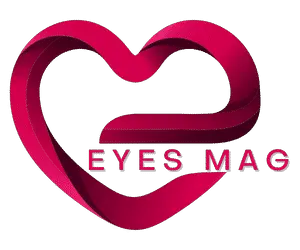What do Green and Yellow make | Mixing Colors and Making new colors
Green and yellow are colors that we see all the time. While you may be familiar with these colors on their own, you may not be aware of what happens when they are mixed.
You might be wondering, “What color do yellow and green make?” If this is the case, we are here to assist you. Today, we’ll answer your question and look at how these colors work together.
Individually, both colors may mean and represent different things to different people. Yellow, for example, could express happiness, warmth, and sunshine. On the other hand, Green can represent nature, growth, renewal, and life. However, it may be difficult to imagine what these two would look like when combined. Would one color stand out more than the other? Or would it simply muddle the outcome?
Fundamentals of Color Theory
You were taught the fundamentals of color theory as a child. Your teacher may have even shown you the color wheel and the colors that go together. Stay tuned for more on the relationship between these colors. The color wheel is typically divided into primary, secondary, and tertiary colors. The primary color subgroup consists of red, blue, and yellow. Meanwhile, the second group includes violet, orange, and green.
Tertiary colors are made up of one primary color and one secondary color. This color family includes red-violet, red-orange, blue-green, blue-violet, yellow-orange, and yellow-green.
What color do yellow and green produce?
You’ve probably figured out what green and yellow look like by now. You now have a better understanding of the by-product of these two colors thanks to the fundamentals of color theory. Now that we have more information, we can answer the question, “What color do green and yellow make?” To put it simply, the combination of these colors is yellow-green. Yellow-green is categorized as a tertiary color.
What color do yellow and green produce?
Mixing these two colors isn’t the only way to get a yellow-green effect. If you only have primary colors on hand, you can easily work with them.
To make green, simply mix equal parts blue and yellow. Then, combine yellow again to get yellow-green.
Keep in mind that the outcome of these colors varies depending on the amount of hues added. Let’s dig a little deeper into this.
Color harmonies (schemes):
Monochrome (meaning “one color”) color harmonies include only one color in different value (the lightness and darkness of a color) and intensity (the brightness or dullness of a color). An example of a monochrome color scheme could include any color mixed with white, gray, or black. For example, red, rose and pink (red mixed with white) are monochrome.
Adjacent colors (also called analogous colors) use colors that neighbor each other on the color wheel. An example is a color scheme that includes various values and intensities of reds and oranges.
Colors opposite each other on the color wheel are called complementary colors. For example, violet and yellow are complementary colors. So are red and green, and blue and orange.
A single split complement employs a primary color and colors on either side of the complement. An example is a color scheme with varying values and intensities of greens, violet-reds, and red-oranges.
Colors are used at the points of an equilateral triangle in a triad (three colors spaced equally on the color wheel). These are sometimes referred to as balanced colors. A triadic scheme could be red, blue, yellow; green, orange, purple; and so on.
A double split complement (also known as a tetradic complement) employs two complements, one apart on the color wheel. As an example, consider red, green, orange, and blue.
Warm and cool colors
The warm colors are reds, oranges, and yellows, while the cool colors are blues, greens, and violets.
Going Darker, Going Lighter
Yellow-green is a versatile color easily manipulated to achieve the desired effect. You can darken the color by adding more green. In this case, green will be the dominant color in the combination. On the other hand, if you want to lighten and brighten the hue, add more yellow to the mix.
To achieve a lighter tint, you can also add white. Meanwhile, adding black will deepen and add depth and dimension to the result. As a result, the shade works well with other colors.
Designing with Green and Yellow
Many people are afraid to use green and yellow in their designs. However, this can produce stunning results that help any space stand out from the crowd when used correctly. These can even become a staple color not only for your home but also for the clothes you own. Yellow-green conveys a sense of newness. It combines the best of yellow and green to create something unique.
Because it evokes a sense of lightness akin to a breath of fresh air, you can use this color as the foundation for a spring-themed design.
When combined with light colors, such as pastel hues, this would set the tone for the season’s arrival. Pinks and blues would contrast nicely with these.
For those who prefer a more subdued approach to yellow-green, combine it with white, beige, ecru, brown, grey, and other neutral colors to create a refreshing and homey palette that can be used all year.
Yellow-green clothing is here to stay. This will become a staple in almost anyone’s wardrobe, from vintage-style dresses to brighter, neon hues.
This is one color that will take you from day to night, from street to prim and proper, when worn over biker shorts or with a cinched belt.
In conclusion
Color mixing is a skill that everyone should be able to master. You can now start incorporating this into other aspects of your life, such as fashion, beauty, home goods, health, and many more, now that you understand how combining yellow and green works and what pairs well with it.


















